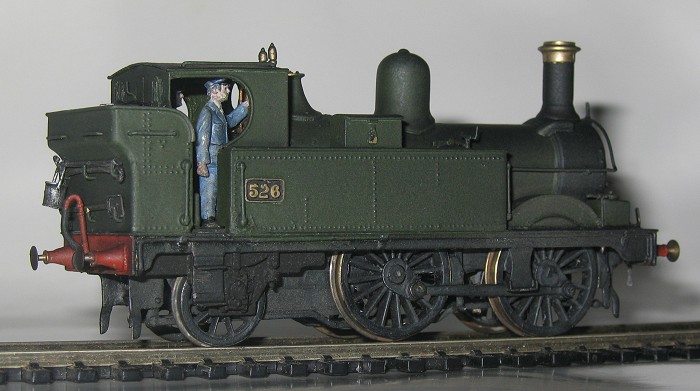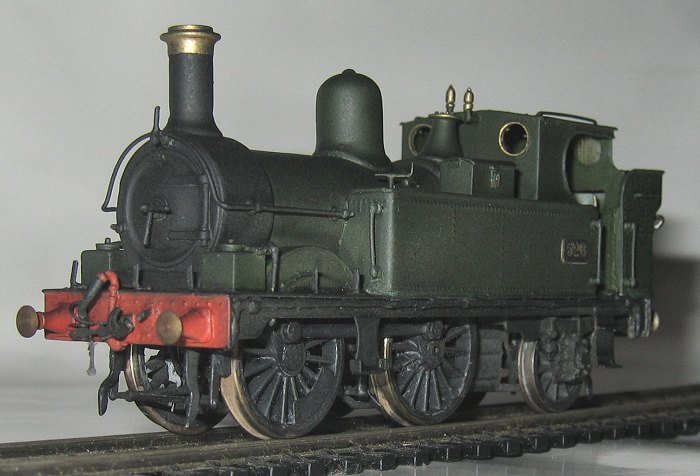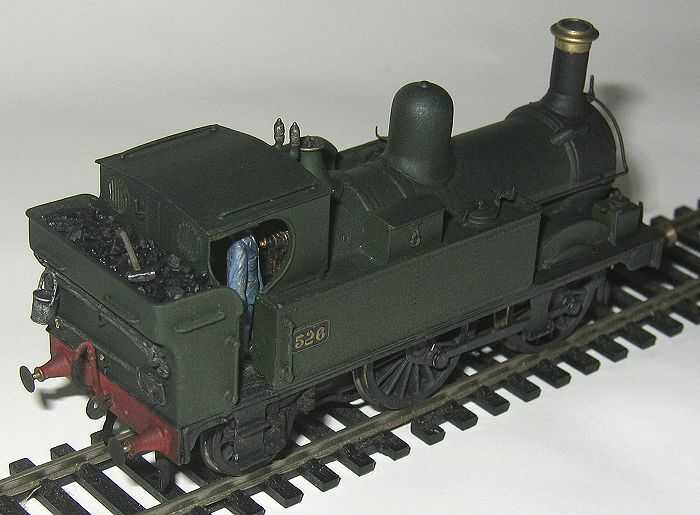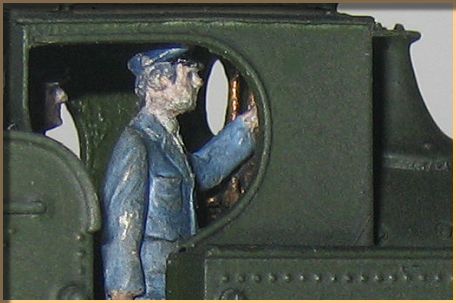| Section Page | Previous Page | Next Page |
Alan Gibson 4mm 517 Classby Paul Willis I have pretty limited experience in building loco kits, mostly a few 009 Blackwoods L&B kits that will one day run (fingers crossed). But my attentions got diverted to things GWR and I decided that a 517 was just what I needed. There's something I find just irresistible about these locos! They really look like the end product of a long and confused history of modifications and standardisation that ended in a variety of locos – all very unstandardised and with only a platina of modernity. The Alan Gibson kit is good, allowing many of the different versions of this class of loco to be built. But like any kit it can be improved with details, and it's pointless adding them unless you have photos of a prototype. I chose No. 526 as featured on a couple of pages of John Lewis' Autocoach books., where it is seen from different angles pulling a Clifton Downs set.
 Essentially the kit went together fairly well with a few alignment problems with the boiler, cab and bunker. By far the biggest headache was the chassis, which I built as OO. Could I get the little bugger to work? I turned it over to Doug Clarke, a loco kit builder from wayback who specialises in Australian HO. Even he had more than a few problems with it. Among the problems were thin frames and steel-rimmed wheels. The latter seem to rust far too readily in the Sydney climate, so he swapped them for nickel-silver rimmed wheels from Romford. Eventually Doug got the thing running, but it still leaves a lot to be desired as a performer. It was only some time later that I realised I had put a hornblock guide in a bit squew-wiff which is no doubt the seat of many problems! Next step is to build a new chassis for it in P4. I see Alan offers milled frames for this project and most of the other necessities (new hornblock guides, coupling rods etc) are also available separately.
 I've started adding the autogear to the loco, fabricating the universal joint on the left hand side of the buffer beam, but I've yet to add the prominent bracket that hangs down below the front buffer with all it's cranks and rods behind it. There are a few irregularities and details that I think help bring the loco to life. I imagine that a fireman would have been shot for resting his long shovel on the lamp irons but, seeing as this loco was almost permanently attached to a Clifton Downs set, he might have tried to get away with it. The bucket and other tools as well as the hammer on top of the coal do their bit for the model as do the padlocks on the tool boxes. I've only lightly weathered the loco, even these quirky old ladies were still looked after by their crews. So all up, apart from the running problems, I'm pretty happy with the loco. Now for the two trailers...
|
| Section Page | Previous Page | Next Page |
